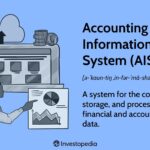What Is an Automated Teller Machine (ATM)?
An automated teller machine (ATM) is an electronic banking outlet that allows customers to complete basic transactions without the aid of a branch representative or teller. Anyone with a credit card or debit card can access cash at most ATMs, either in the USA or abroad.
ATMs are convenient, allowing consumers to perform quick self-service transactions such as deposits, cash withdrawals, bill payments, and transfers between accounts. Fees are commonly charged for cash withdrawals by the bank where the account is located, by the operator of the ATM, or by both. Some or all of these fees can be avoided by using an ATM operated directly by the bank that holds the account. Using an ATM abroad can cost more than using one in the USA.
ATMs are known in different parts of the world as automated bank machines (ABMs) or cash machines.
Key Takeaways
- Automated teller machines (ATMs) are electronic banking outlets that allow people to complete transactions without going into a branch of their bank.
- Some ATMs are simple cash dispensers, while others allow a variety of transactions such as check deposits, balance transfers, and bill payments.
- The first ATMs appeared in the mid- to late 1960s and have grown in number to more than 2 million worldwide.
- Today’s ATMs are technological marvels, many capable of accepting deposits as well as several other banking services.
- To keep ATM fees down, use an ATM branded by your own bank as often as possible.
Click Play to Learn How ATMs Work
Understanding Automated Teller Machines (ATMs)
The first ATM appeared at a branch of Barclays Bank in London in 1967, though there are reports of a cash dispenser in use in Japan in the mid-1960s. The interbank communications networks that allowed a consumer to use one bank’s card at another bank’s ATM followed in the 1970s.
Within a few years, ATMs had spread around the globe, securing a presence in every major country. They now can be found even in tiny island nations such as Kiribati and the Federated States of Micronesia.
More than 2.2 million
ATMs in use around the world
Types of ATMs
There are two primary types of ATMs. Basic units only allow customers to withdraw cash and receive updated account balances. The more complex machines accept deposits, facilitate line of credit payments and transfers, and access account information.
To access the advanced features of the complex units, a user often must be an account holder at the bank that operates the machine.
Analysts anticipate ATMs will become even more popular and forecast an increase in the number of ATM withdrawals. ATMs of the future are likely to be full-service terminals instead of or in addition to traditional bank tellers.
Cryptocurrency enthusiasts can now buy and sell Bitcoin and other crypto tokens via Bitcoin ATMs, which are internet-connected terminals that will dispense cash in return for crypto or accept cash or credit card to purchase. There are now nearly 40,000 Bitcoin ATMs located around the world.
ATM Design Elements
Although the design of each ATM is different, they all contain the same basic parts:
- Card reader: This part reads the chip on the front of the card or the magnetic stripe on the back of the card.
- Keypad: The keypad is used by the customer to input information, including personal identification number (PIN), the type of transaction required, and the amount of the transaction.
- Cash dispenser: Bills are dispensed through a slot in the machine, which is connected to a safe at the bottom of the machine.
- Printer: If required, consumers can request receipts that are printed out of the ATM. The receipt records the type of transaction, the amount, and the account balance.
- Screen: The ATM issues prompts that guide the consumer through the process of executing the transaction. Information is also transmitted on the screen, such as account information and balances.
Full-service machines now often have slots for depositing paper checks or cash.
How to Use an ATM
Banks place ATMs inside and outside of their branches. Other ATMs are located in high-traffic areas such as shopping centers, grocery stores, convenience stores, airports, bus and railway stations, gas stations, casinos, restaurants, and other locations. Most ATMs that are found in banks are multifunctional, while others that are off-site tend to be primarily or entirely designed for cash withdrawals.
ATMs require consumers to use a plastic card—either a bank debit card or a credit card—to complete a transaction. Consumers are authenticated by a PIN before any transaction can be made.
Many cards come with a chip, which transmits data from the card to the machine. These work in the same fashion as a bar code that is scanned by a code reader.
$60
Average amount of cash withdrawn from an ATM per transaction
ATM Fees
Account holders can use their bank’s ATMs at no charge, but accessing funds through a unit owned by a competing bank usually incurs a fee. According to MoneyRates.com, the average total fees to withdraw cash from an out-of-network ATM was $4.55 as of 2022.
Some banks will reimburse their customers for the fee, especially if there is no corresponding ATM available in the area.
So, if you’re one of those people who draws weekly spending money from an ATM, using the wrong machine could cost you nearly $240 a year.
ATM Ownership
In many cases, banks and credit unions own ATMs. However, individuals and businesses may also buy or lease ATMs on their own or through an ATM franchise. When individuals or small businesses such as restaurants or gas stations own ATMs, the profit model is based on charging fees to the machine’s users.
Banks also own ATMs with this intent. They use the convenience of an ATM to attract clients. ATMs also take some of the customer service burdens from bank tellers, saving banks money in payroll costs.
Using ATMs Abroad
ATMs make it simple for travelers to access their checking or savings accounts from almost anywhere in the world.
Travel experts advise consumers to use foreign ATMs as a source of cash abroad, as they generally receive a more favorable exchange rate than they would at most currency exchange offices.
However, the account holder’s bank may charge a transaction fee or a percentage of the amount exchanged. Most ATMs do not list the exchange rate on the receipt, making it difficult to track spending.
How much can you withdraw from an automated teller machine (ATM)?
The amount that you can withdraw from an automated teller machine (ATM) per day, per week, or per month will vary based on your bank and account status at that bank. For most account holders, for instance, Capital One imposes a $1,000 daily ATM withdrawal limit and Well Fargo just $300. You may be able to get around these limits by calling your bank to request permission or upgrading your banking status by depositing more funds.
How do you make a deposit at an ATM?
If you are a bank’s customer, you may be able to deposit cash or checks via one of their ATMs. To do this, you may simply need to insert the checks or cash directly into the machine. Other machines may require you to fill out a deposit slip and put the money into an envelope before inserting it into the machine. For a check, be sure to endorse the back of your check and note “For Deposit Only” to be safe.
Which bank installed the first ATM in the United States?
The first ATM in the United States was installed by Chemical Bank in Rockville Center (Long Island), N.Y., in 1969 (two years after Barclays installed the first ATM in the United Kingdom). By the end of 1971, more than 1,000 ATMs were installed worldwide.
The Bottom Line
ATM stands for automated teller machine. These are electronic banking outlets that allow people to complete transactions without going into a branch of their bank. Some ATMs are simple cash dispensers, while others allow a variety of transactions such as check deposits, balance transfers, and bill payments. The first ATMs appeared in the mid- to late 1960s and have grown in number to more than 2 million worldwide.



